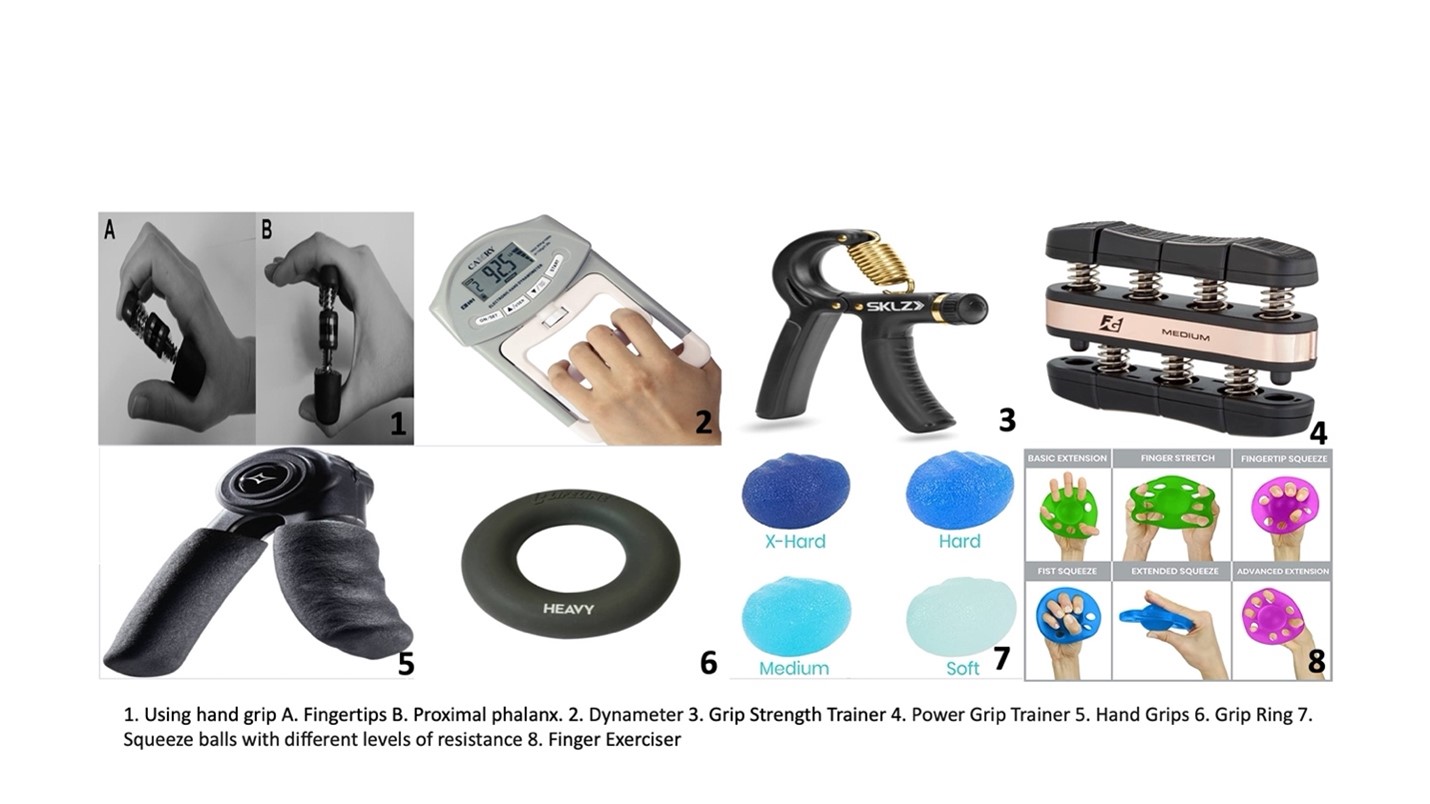Workout to Improve Grip Strength and Manual Dexterity

Like many other physicians, exercise is a hobby and source of pleasure for me, a needed break from the busy schedule for my health and wellbeing. After matching into interventional cardiology fellowship, I quickly learned that my hand's physical status is a priority, and I began to explore different physical activities that would positively impact my manual skills.
Interventional cardiology relies heavily on good motor and sensory hand skills, which translates to better patient care and fewer procedure-related complications. The beauty of hand exercises is their ease to perform, wide availability, and potentially significant impact on day-to-day practice.
The hand consists of about 34 small muscles, nerves, tendons, and joints that perform a wide range of functions. The average grip strength for men is 104.3 lbs for the dominant hand and 93.1 lbs for the non-dominant hand; women averaged 62.8 lbs and 53.9 lbs, respectively. Multiple studies have suggested that hand strength training is an effective way to improve accurate force production tasks. This can be explained by muscle hypertrophy and adaptation at a neural level, mediated by the changes in the cortical level. Moreover, better hand grip strength has been associated with less future risks of tendonitis, carpal tunnel syndrome, or arthritis.
Most published work on exercise is for injury management, but little is available for healthy hands as proactive measures. Increasing muscle strength should lead to better hand functions and coordination in healthy people. I will focus on grip strength and manual dexterity.
Grip Strength
There are many exercises out there, with and without resistance, to improve finger and hand strength. A commercial grip dynameter, to test the maximum grip strength, establishes the maximum ability. There are several established types of gripping; I feel the most relevant for interventional cardiology are pinching and supporting. Pinching strength is needed for holding catheters and wires, while the supporting hand grip is imperative in maintaining your grip on a load for an extended time. The Hand Exerciser is one of the best tools to improve hand grip. This can be used to strengthen both intrinsic and extrinsic flexors. When a person presses with their fingertips, extrinsic flexors are the force generators, while the intrinsic digit-specific muscles are the force generators when the person presses with proximal phalanges. Repetition and consistency are imperative. For example, 5-6 sets of 8-10 squeezes, 2-3 times weekly, with 1-2 minutes of rest advised between sets, is recommended.
Isometric strengthening for thumb opposition can be done by touching the tip of the thumb to the index finger and applying pressure against each other. 5-10 fingertip push-ups with 1-2 sets has been shown to improve finger extensors. To accomplish this, assume a typical push-up position with the space between the feet and the hips in accordance with the shoulders; Lift the fingers until the person is well-balanced on the fingertips. Climbing is known to improve pinching strength as well. Pinch blocks are great available option, blocks of wood or plastic from which you can hang a load for an incremental period of time to increase your pinch strength.
Manual Dexterity
This is the ability to use the hands in a coordinated way to grasp and manipulate objects and demonstrate small, precise movements. Several hobbies are known to improve manual dexterity, such as drawing, painting, woodcarving, sewing, needlepoint, crocheting, and knitting. Golf is another hobby that improves manual dexterity. Studies show that learning a musical instrument (e.g., piano, violin) improves manual dexterity and hand-eye coordination and increases IQ.
To increase eye-to-hand coordination, place the hands on a flat surface with palms facing up and join the tips of thumbs with the index fingers, forming an "O" without raising the other fingers. Repeating the exercise several times with the remaining fingers can improve hand coordination and speed. Sensory balls and particles to increase tactile sensitivity and specificity are also options.
There are tons of available simple exercises on the web; here is a common list of fine motor activities that don't need fancy tools:
- Shuffle and deal cards.
- Trace a design with a pen.
- Make a chain of paper clips.
- Pick up small beans and put them in a cup.
- Pick up coins and place them in a coin purse.
- Screw and unscrew nuts and bolts.
- Pick up toothpicks with a tweezer.
Improving the hand skills is crucial for FITs interested in IC, but having the ability to properly analyze coronary angiograms, knowing the equipment well (i.e., how the tip of the guidewire should behave by applying certain rotational force at the proximal end) and good eye-to-hand coordination are equally important skills for a successful interventional cardiology career.

This article was authored by Amr Salama, MD, a cardiology fellow at Rochester General Hospital. He will be joining the UAB next summer for Interventional Cardiology training. Twitter: @Salama_AmrA
This content was developed independently from the content developed for ACC.org. This content was not reviewed by the American College of Cardiology (ACC) for medical accuracy and the content is provided on an "as is" basis. Inclusion on ACC.org does not constitute a guarantee or endorsement by the ACC and ACC makes no warranty that the content is accurate, complete or error-free. The content is not a substitute for personalized medical advice and is not intended to be used as the sole basis for making individualized medical or health-related decisions. Statements or opinions expressed in this content reflect the views of the authors and do not reflect the official policy of ACC.

